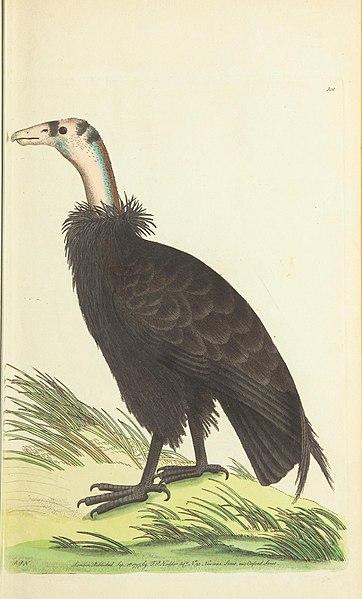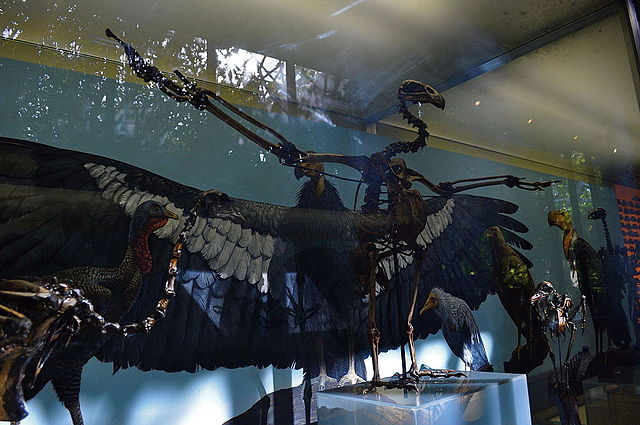The California condor is a New World vulture and the largest North American land bird. It became extinct in the wild in 1987 when all remaining wild individuals were captured, but has since been reintroduced to northern Arizona and southern Utah, the coastal mountains of California, and northern Baja California in Mexico. It is the only surviving member of the genus Gymnogyps, although four extinct members of the genus are also known. The species is listed by the International Union for the Conservation of Nature as Critically Endangered, and similarly considered Critically Imperiled by NatureServe.
California condor
Frederick Polydore Nodder's illustration accompanying George Shaw's 1797 species description
A California condor skull
Fossil of the extinct species Gymnogyps amplus from the La Brea Tar Pits
Cathartidae, known commonly as New World vultures or condors, are a family of birds of prey consisting of seven extant species in five genera. It includes five extant vultures and two extant condors found in warm and temperate areas of the Americas. They are known as "New World" vultures to distinguish them from Old World vultures, with which the Cathartidae does not form a single clade despite the two being similar in appearance and behavior as a result of convergent evolution.
Image: Urubu a tete rouge Turkey Vulture
Image: Turkeyvulturerange
Fossil of the extinct Breagyps clarki
The featherless head of the American black vulture, Coragyps atratus brasiliensis, reduces bacterial growth from eating carrion.








